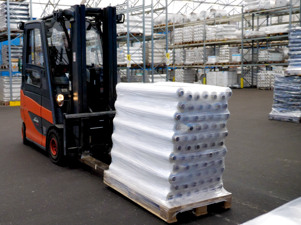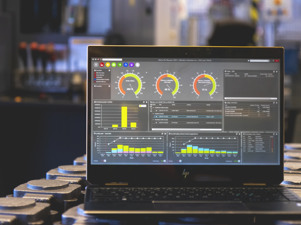Creating a High-Performing Culture through Employee Engagement
“Organic growth occurs within existing business through an engaged and high performing workforce.” - Gallup’s 2017 Employee Engagement Report.
The Gallup’s 2017 State of the Global Workplace report, reveals that incredibly, only 19% of employees in Southeast Asia are engaged, 70% of employees were not engaged, and 11% of employees stated that they were “actively disengaged.” Gallup has consistently found that manufacturing workers, in particular, struggle with engagement - among manufacturing and construction workers, twice as many employees are actively disengaged as are engaged.
One misguided notion many well-intentioned companies practice: They base their employee engagement strategy on metrics-only solution, and often on a periodical basis, that does nothing to improve their business, rather than focusing on the broader strategic framework that clearly communicates how higher engagement levels result in improved business outcomes. As a result, these companies are not able to attain the high-performing environment they seek.
Employee engagement is serious business as employees are a company’s most important asset. When a shop floor worker or supervisor is engaged, they feel they are part of something larger, this enables them to contribute quality performance, and collaborate effectively with other departments to work towards a common goal. Research repeatedly demonstrates that people deliver their best effort when they feel a stronger bond to their company’s mission than the pursuit of a paycheck or swanky benefits. Companies that can keep employees engaged, and on the job longer, not only reduce overall turnover and the costs associated with it, but also boost customer satisfaction, employee satisfaction, and profitability.
While almost every business leader understood well that engaged employees, effective management and improved performance are intrinsically linked; but few succeed in maximizing the potential of current employees to achieve this steadfast goal with the right solution. In the manufacturing environment, from the shop floor to the top floor, the commitment to an engaging employee experience, production traceability, and improved work performance are of parallel imperative. This might all looks like a complex mission, but one which we witness many companies in Sweden and Southeast Asia successfully navigate, results from Monitor ERP – creating a sustainable foundation with an agile track-and-trace, Time Recording module.
We turn to Karl Persson, our Business Consultant with solid experience in helping countless companies in identifying challenges and developing effective solutions with Monitor ERP. He will introduce a brand-new functionality in Monitor and unveil the role Monitor is playing in boosting work efficiency and employee engagement. Karl will bring his knowledge to bear on how you can easily track your employee work performance with a panoramic view of your entire production ecosystem, to the workstations, and a more employee-centric view of your workforce.

What can the new functionality – Daily Management do? And, what are the benefits companies can reap from it?
We can now improve the daily “whiteboard meeting” in production with actual facts and statistics extracted from the last shift, yesterday, or last week’s performance. We could even replace the whiteboard with a large touchscreen display or monitor, track employee attendance, absences or leave, and replan production orders and/ or workers in the workstation accordingly.
With Daily Management, we can do all that. The feature manifests several positive outcomes:
1. We base our decisions on computational logic and not emotions (such as who yells the loudest).
2. We make and replan changes such as manufacturing schedules, machine and manpower capacity, or production orders, directly in the system which saves lots of time. In contrast to traditional method, we have to first draw and write the current status and the actions that need to be taken on the whiteboard. The supervisor or planner then needs to go to the office to manually enter the handwritten action plan into the system, which is an extremely time-consuming process.
3. Operators will be much more motivated when the key performance indicators (KPIs) with facts and figures are presented as they are clear with priorities and the direction of all projects or orders. For instance, there are three different workstations, if station 1 always achieves higher efficiency and fewer rejects compared to stations 2 and 3, all workers will be more motivated to outperform each other as the target is well-established. Workers at station 1 would more likely want to keep their pole position by working harder, on the other hand, workers at stations 2 and 3, would very likely want to catch up and take over the lead, creating a healthy competition between the three workstations.
4. Management can make sound decisions throughout the dynamic and unpredictable operation of a manufacturing process. Let’s take point 3’s example, since station 1 is operating with such efficiency, we could perhaps move some workers to assist the other two workstations. Alternatively, we could also look into the underlying factors that could possibly affect the efficiency of other stations, such as stations 2 and 3 might be located too far away from the warehouse or if we could use a more efficient way of transporting just-in-time (JIT) materials to the workstations?
How do companies track their employee work performance using Monitor ERP?
Companies can use Recording Terminal which contains functions for employee attendance and work recording like historical background of employee work performance, as well as functions for detail planning, schedules, etc. Attendance and work recording items can be adjusted if necessary. They can also be authorized using a separate function. The shop floor supervisor or worker can choose which task to perform based on job delegation and priority level. They can record work directly on their device such as a PC next to the machine, or a web browser on any device such as a tablet or smartphone.
Is it difficult to record work? Why should companies spend time recording work on Recording Terminal?
This is a very common comment from customers when it comes to recording attendance and work. They think it is better to put their focus on the actual work instead of going to a computer to clock in and clock out for their work. Another comment we regularly hear is: “My operators have low computer literacy, recording their own attendance will be difficult.”
First of all, it doesn’t matter if the operator is not computer literate. I can guarantee that they can handle it effortlessly because it is extremely simple with Monitor.
Another reason to do this is fairly simple. We can easily follow up on the actual cost of every single manufacturing order with this type of data in the system. In this way, we can also identify with ease if we have priced our products wrongly, for example.
A third reason and scenario can be like this: We noticed that department A performs poorly. We can then look into a specific machine or station, or even at an operator level to pinpoint the root cause, which will not only serve as valuable information for the management but also a golden opportunity to increase employee motivation and ensure they perform at their best.
Why should companies undertake Operation Follow-up?
This is a similar comment to the recording terminal. Instead of spending time on historical data, companies want to focus on upcoming orders. The reason for this question is very much the same as the above. This is one of the ways to identify production bottlenecks such as workstations’ efficiency levels. One crucial thing to keep in mind is that this is not only the way to measure production efficiency, it can also be the way to identify poor production planning like incorrect bills of materials (BOM) and routings data that lead to inaccurate lead time calculation, implying a wrong price indicated to the customer. Ideally, our efficiency should be close to 100% in all workstations, but not lower or higher.
From my experience, companies that follow up on their orders based on information provided by the system, are much more efficient and motivated to do a good job. As mentioned earlier, this does not only serve as the operators’ KPIs but also for the planners, engineers and others. If we look at a specific department, the efficiency might look good overall, but we have the opportunity to scrutinize a specific workstation within that department to detect problems that possibly occur. We can then delve into identifying which welding machine or operator in general or in particular; or if it’s the raw material that contributes to this result.
With Monitor ERP, we save a lot of time in follow-up. All you need is to set up parameters of your preference in the system with our professional consultant. You can then retrieve reports with just one click. You may even receive automated reports in your inbox if you deploy our option, MONITOR Agent.
Why is employee engagement important in creating high-performing culture?
It takes pains to broadcast the company’s strategy to employees, especially if you have more than one production line around the world. Without any system in place, I can promise that many of these messages are not getting through. Workers on the production floor will have no clue about the company’s delivery reliability to customers or the status of their station’s performance.
Humans are collaborators by nature. How do we nurture engaged and committed employees? We create an environment where business leaders regularly build interactions to help employees learn about the company’s higher purpose such as goals, understand the big picture, and involve them in a bottom-up process of purposeful actions. By collecting real-time data, we help them grasp the impact of their work on dashboards with important statistics and graphs in the workshop and office, and build a think-outside-the-box culture that encourages new ideas that defy conventional wisdom, ensuring everyone is working towards a shared success.
More companies are getting more committed than ever to employee engagement by recognizing the opportunity that exists to connect, communicate and engage with their employees. What we have to realize is that today’s workers need new reasons to believe in their companies, when many companies are shifting toward transformational changes to become more resilient and digitally enabled.
Workers need to be invested in a purpose, supported in a team and find meaning in their work. Workforce efficiency and employee engagement can both pull in the same direction. We see companies deploying G5 not only produce great improvement in employee engagement, but also empower employees to help each other perform better, simplifying structures to meet the total delivery reliability KPI, and increasing the speed of decision-making.
Read about Relating Employee Engagement to Manufacturing Success to learn more about being proficient and actively involved in personal areas of responsibility.






